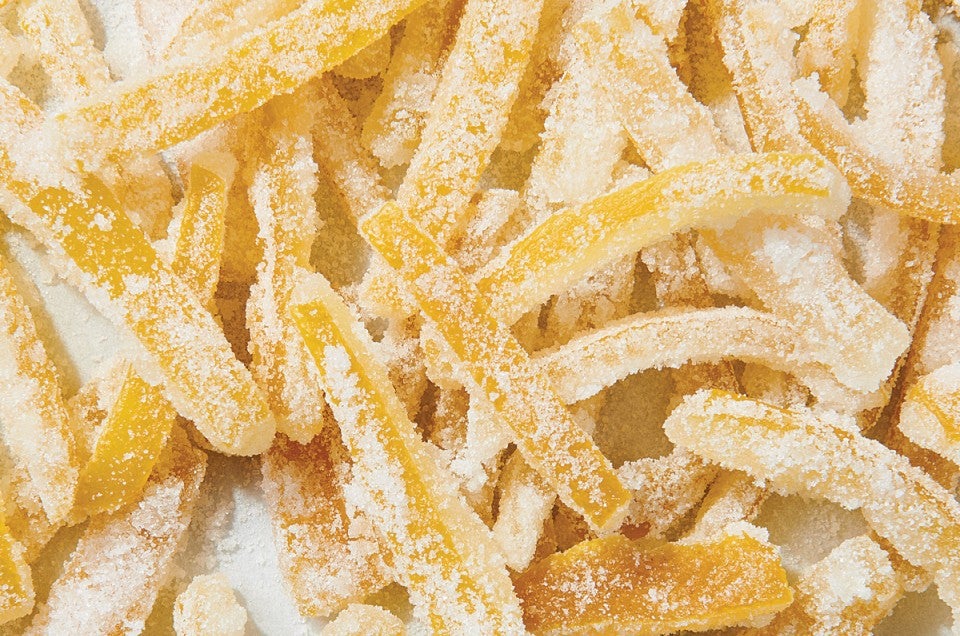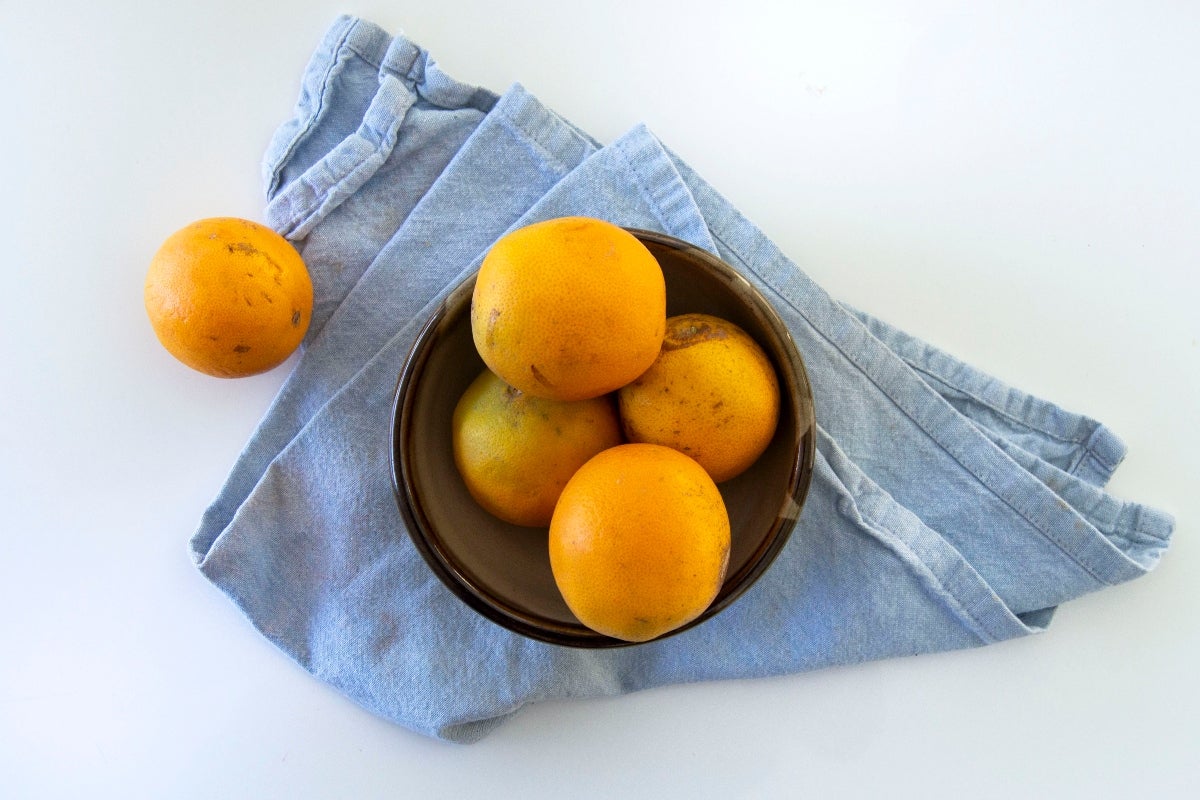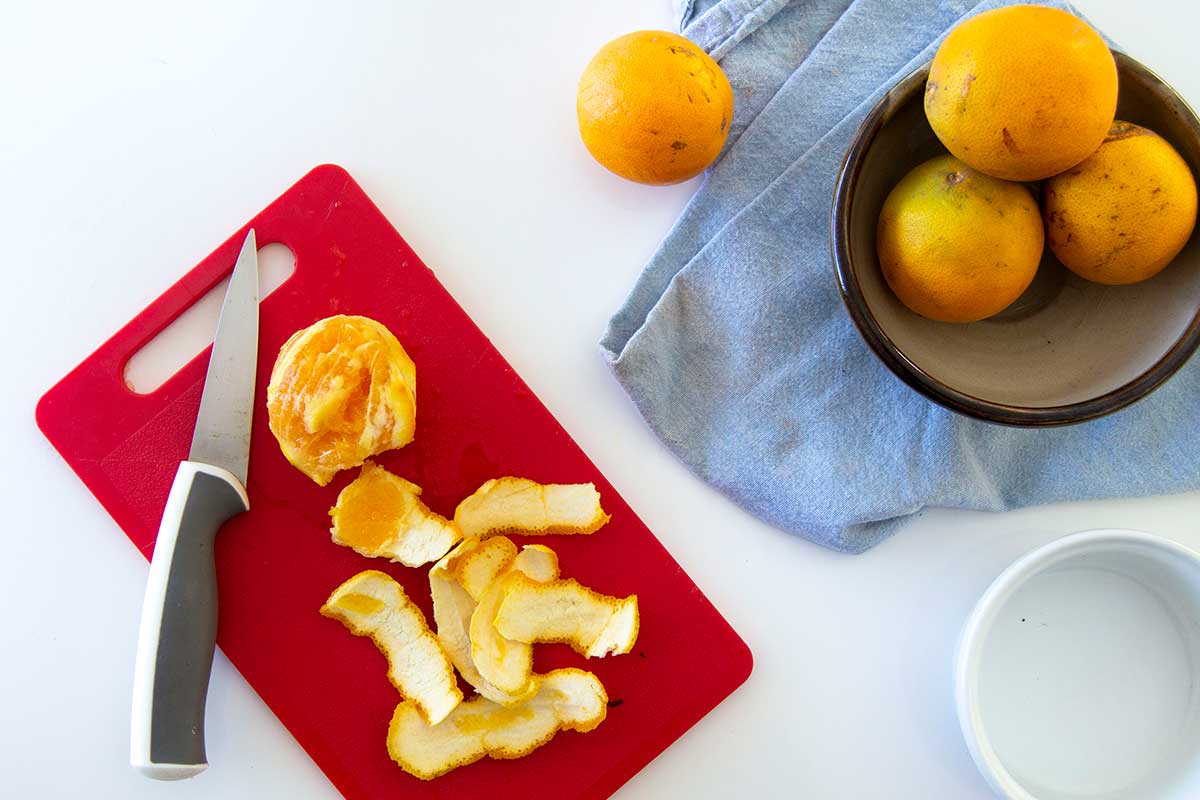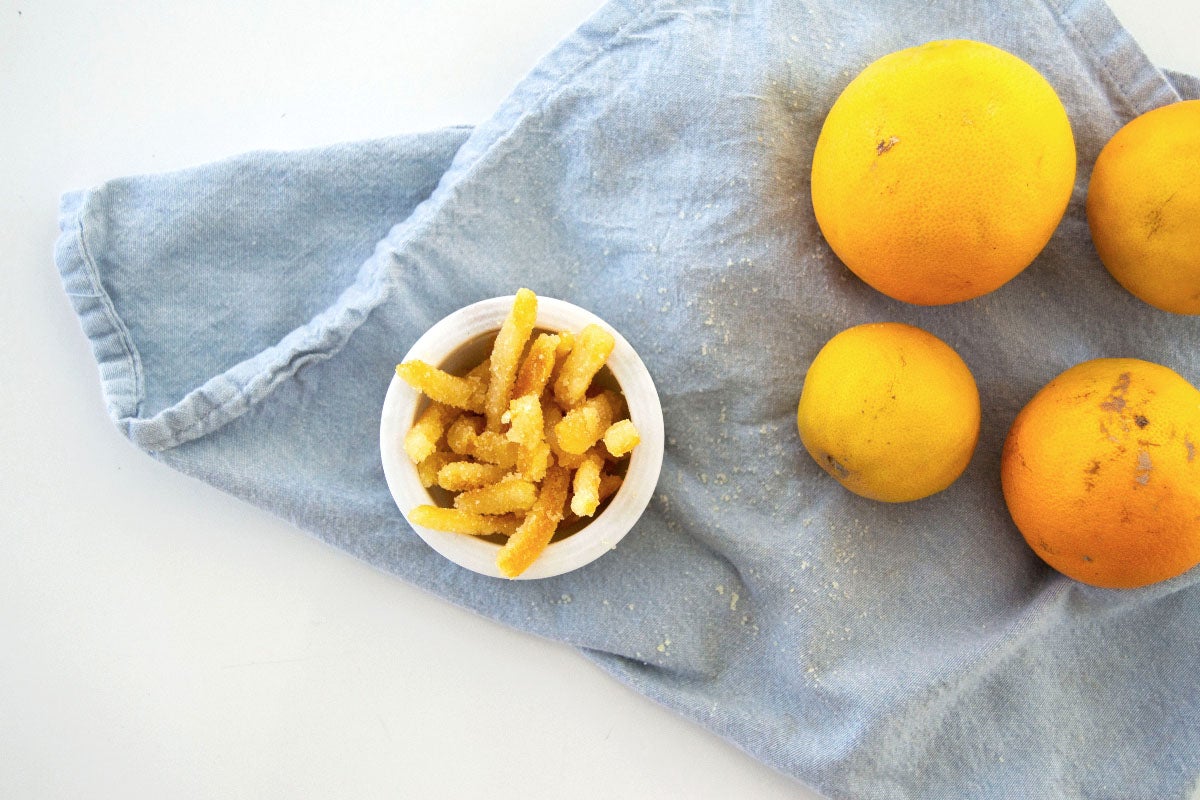


How many times have you thrown away the peel after eating an orange? Or tossed half a lemon once you’ve squeezed out the juice?
When it comes to fruit, what we typically think of as trash (or, hopefully, compost!) actually has a second life just waiting to be discovered: candy.
That’s right. Those vibrant citrus peels can be transformed into sweet, bright little bursts of flavor that make an excellent addition to cookies, scones, and cakes. Not to mention, they’re delightful treats when eaten on their own.
If you can boil water, you can candy citrus peel. It's just about that simple!
You’ve likely come across candied citrus peel in your baking, or maybe you’ve seen it stocked on the shelves of gourmet food shops. Rather than buying it, however, it’s much more fun to simply make it at home.
Candied citrus peels have been transformed from bitter, astringent rinds to soft, sweet candies by simmering in a simple syrup. Blanching the peels (i.e., submerging in boiling water for a short period of time) removes their bitter taste, making them easier to eat on their own.

You can candy just about any type of citrus peel — lemon, grapefruit, pomelo, kumquat — although oranges are the most common. Typically fruits with thicker peels make the best options for candying, as thinner skinned fruits like clementines can sometimes become tough after boiling. And if possible, start with organic or locally grown citrus, as fruits that have been sprayed with chemicals can have an unpleasant residual taste.
Candying citrus is incredibly simple, and comes down to just three easy steps: preparing, blanching, and then simmering citrus peels in sugar and water (simple syrup). Here’s a step-by-step breakdown, using oranges as an example.
The simplest way to remove the peel is to just use a sharp paring knife, though a vegetable peeler will also work. Cut long strips of the orange peel from the top of the fruit to the bottom, being careful to only cut the peel and not any of the actual fruit. If some of your peel still has the flesh sticking to it, no big deal — just use your knife to scrape it off. In addition, try not to get too much of the white pith if you can; no need to worry if you do take the pith along with the peel though, as its bitterness will be blanched away.

Then, use a sharp knife to slice the peel into 1/4”-wide strips.

Next, we’ll blanch the peel; as mentioned, this process removes the bitterness. Add the peel strips to a medium saucepan, then cover with water. Bring to a boil, and let the peels boil for 5 minutes. Drain the peels, then return to the saucepan.
We’re going to repeat this process twice more for a total of three times, with each round removing more of the bitter taste. Cover the peels with water, bring to a boil for 5 minutes. Then drain. Cover, boil, and drain once more.
If your peels are still super bitter (this may especially be the case for grapefruit), you may want to blanch one or two more times.

Ta-da! Soft, squishy peels that are ready to officially be candied.
Finally — time to add some sugar! Empty the blanched peels into a bowl, then add equal parts (by volume) sugar and water to the saucepan. You really don’t need a recipe for this — just make sure you have enough of the sugar-water mixture to cover your citrus peels. For reference, I had about 1 1/2 cups peels, and I used 2 cups sugar (396g) and 2 cups water (454g).

Stir the sugar and water over medium heat until the sugar dissolves, then add the peels and bring to a boil. Lower the heat to a simmer. Now pretty much all you have to do is wait. Stirring occasionally, let the mixture simmer for about 40 to 60 minutes. The peels are done when they’re soft and translucent around the edges.

While the peels are simmering, set up a drying rack with parchment paper or foil underneath to catch any dripping syrup. Once the peels are ready, drain off the excess syrup in the sink and carefully spread them out on the drying rack.
If you'd like, you can also save the discarded syrup to use as a fruity addition to summer drinks.

If you’d like to roll the peels in granulated sugar for some extra crunch, wait until they're cool enough to handle, then toss in a bowl of sugar to coat. Otherwise, feel free to leave them as they are.
Now that you have your homemade candied citrus, there are so many ways to use it! Our advice:

While it can be easy to reach for store-bought versions of ingredients like this, sometimes making your own can be even more tasty and fun. Especially when it’s this simple to pull off. You can keep unused citrus rinds in a plastic bag in the freezer until you’re ready to candy them. And bonus: because of the high sugar content, candied citrus peels last for a long time — up to a few months at room temperature when stored in a cool, dark place, and even longer in the refrigerator or freezer.
Have you candied citrus peel before? What are your favorite ways to use it? Let us know in the comments below!
Cover photo by Danielle Sykes; food styling by Liz Neily.

